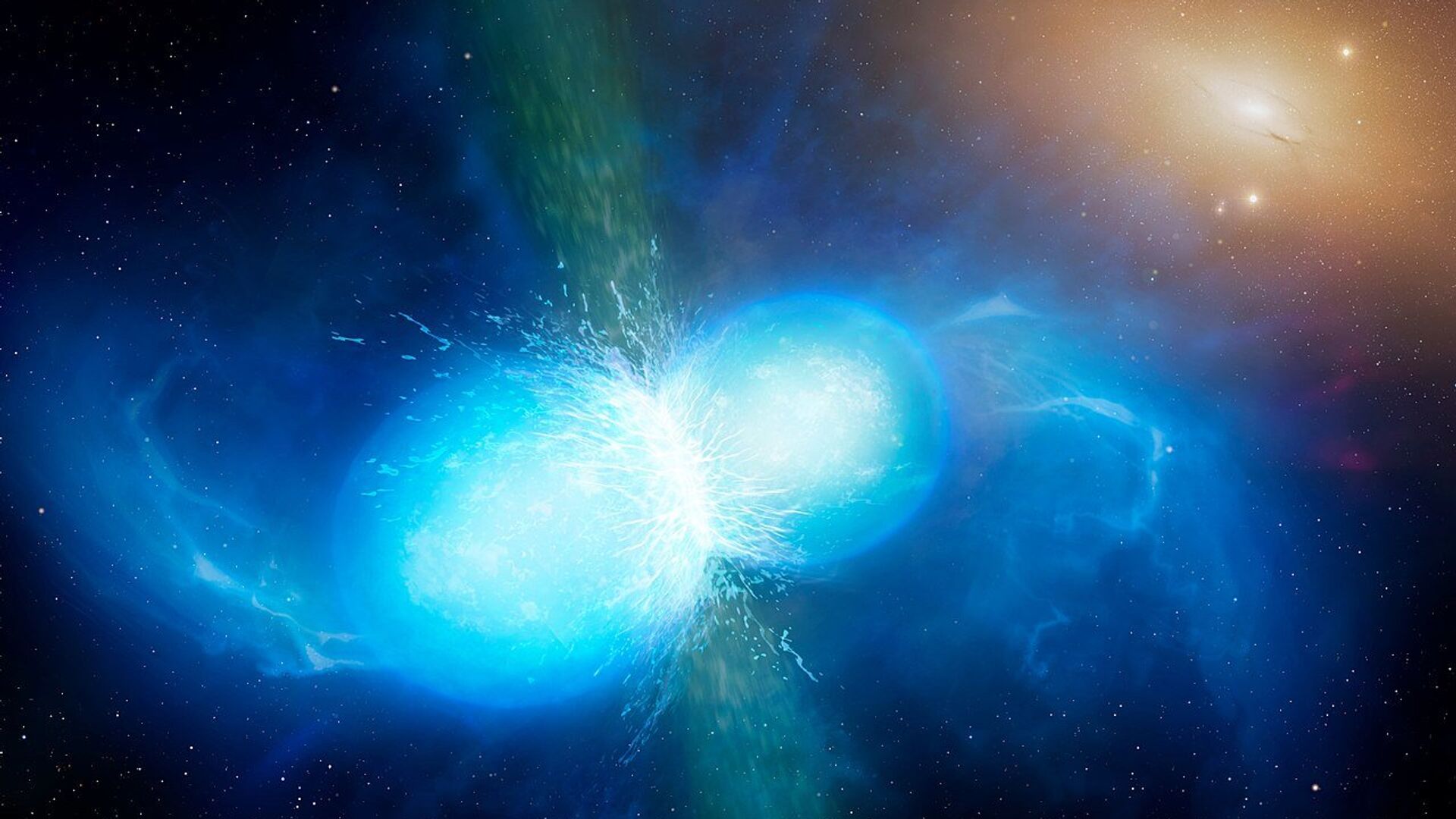https://sputnikglobe.com/20220304/neutron-stars-unleash-strong-warm-winds-after-destroying-stellar-companions-study-says-1093583215.html
Neutron Stars Unleash Strong Warm Winds After Destroying Stellar Companions, Study Says
Neutron Stars Unleash Strong Warm Winds After Destroying Stellar Companions, Study Says
Sputnik International
When massive stars die and explode in large supernovas, neutron stars are what's left of them. Sometimes neutron stars have so-called stellar companions that... 04.03.2022, Sputnik International
2022-03-04T12:22+0000
2022-03-04T12:22+0000
2023-04-12T16:57+0000
stars
neutron star
winds
space
https://cdn1.img.sputnikglobe.com/img/107476/06/1074760677_0:59:1280:779_1920x0_80_0_0_a07e6c58f2eee16c5aed814c40f1f635.jpg
Neutron stars release warm winds - not just extremely hot or cold ones - after devouring their stellar companions, a new study has revealed, according to Nature.The findings were unveiled after the scientific team looked into the data collected from the European Space Agency's (ESA) XMM-Newton satellite, the European Southern Observatory's (ESO) Very Large Telescope (VLT), and the Spanish Gran Telescopio Canarias (GTC). What they observed was an X-ray binary known as Swift J1858 and jets of hot, warm, and cold winds from the neutron star as it was devouring its stellar companion.But Swift J1858 was special: even though it is located on the other side of the galaxy, the obscuration was small enough for a full multiwavelength study to be conducted.Data from space and telescopes on Earth allowed the scientific team to examine the neuron star from the different bands of the electromagnetic spectrum. And while the signs of warm winds could only be detected at ultraviolet wavelengths, the cold winds could theoretically be seen by the human eye, as their signatures were spotted at optical wavelengths.According to Segura, the findings could offer many insights into how neutron stars interact with their environment, as well as contribute to the formation of new stars and galactic evolution.
Sputnik International
feedback@sputniknews.com
+74956456601
MIA „Rosiya Segodnya“
2022
News
en_EN
Sputnik International
feedback@sputniknews.com
+74956456601
MIA „Rosiya Segodnya“
Sputnik International
feedback@sputniknews.com
+74956456601
MIA „Rosiya Segodnya“
stars, neutron star, winds, space
stars, neutron star, winds, space
Neutron Stars Unleash Strong Warm Winds After Destroying Stellar Companions, Study Says
12:22 GMT 04.03.2022 (Updated: 16:57 GMT 12.04.2023) When massive stars die and explode in large supernovas, neutron stars are what's left of them. Sometimes neutron stars have so-called stellar companions that they accrete with.
Neutron stars release warm winds - not just extremely hot or cold ones - after devouring their stellar companions, a new study has revealed, according to
Nature.
"Neutron stars have an immensely strong gravitational pull that allows them to gobble up gas from other stars", co-author of the study from the University of Amsterdam Nathalie Degenaar said. "However, much of the gas that neutron stars pull towards them is not consumed, but flung into space at high speed. This behavior has a large impact both on the neutron star itself, and on its immediate surroundings".
The findings were unveiled after the scientific team looked into the data collected from the European Space Agency's (ESA) XMM-Newton satellite, the European Southern Observatory's (ESO) Very Large Telescope (VLT), and the Spanish Gran Telescopio Canarias (GTC).
What they observed was an X-ray binary known as Swift J1858 and jets of hot, warm, and cold winds from the neutron star as it was devouring its stellar companion.
"Eruptions like this are rare, and each of them is unique", said Noel Castro Segura, an astronomer at the University of Southampton in the UK and lead author of the study. "Normally they are heavily obscured by interstellar dust, which makes observing them really difficult".
But Swift J1858 was special: even though it is located on the other side of the galaxy, the obscuration was small enough for a full multiwavelength study to be conducted.
Data from space and telescopes on Earth allowed the scientific team to examine the neuron star from the different bands of the electromagnetic spectrum. And while the signs of warm winds could only be detected at ultraviolet wavelengths, the cold winds could theoretically be seen by the human eye, as their signatures were spotted at optical wavelengths.
According to Segura, the findings could offer many insights into how neutron stars interact with their environment, as well as contribute to the formation of new stars and galactic evolution.



